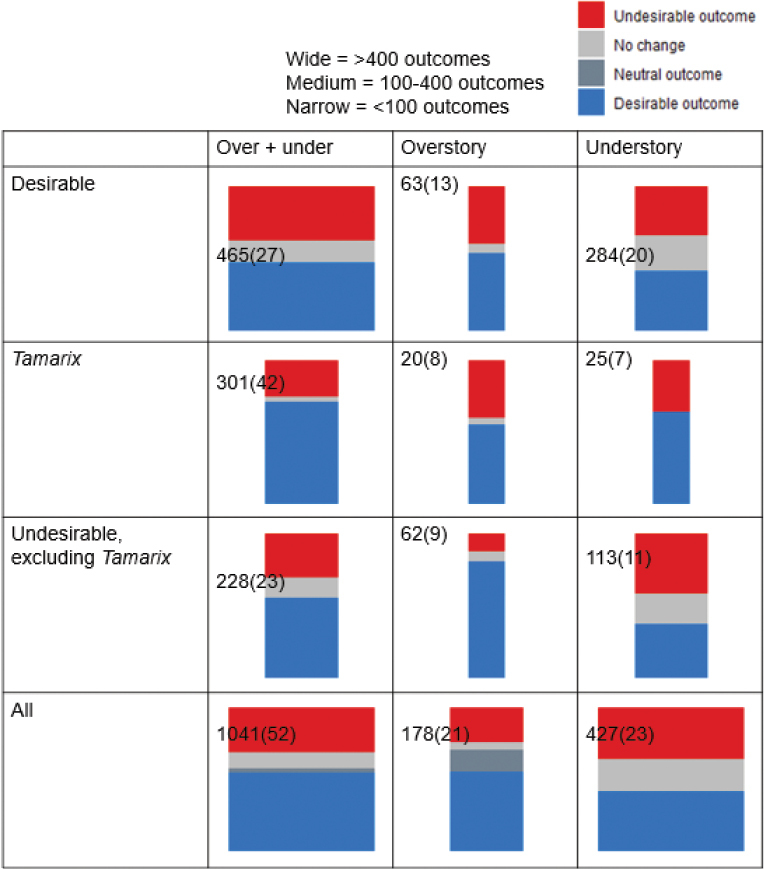
|
||
|
Summary of vote counting by vegetation types, change in vegetation in response to Tamarix control efforts regardless of reported statistical significance in the published paper. Each cell represents a combination of invasive classification (desirable/undesirable/total) and growth habit (overstorey/understorey/both). Bars represent the numbers of desirable outcomes (shown in blue), undesirable outcomes (red), neutral outcomes (dark grey) and no-change (light grey). Width reflects sample size, with number of observations (number of papers in parentheses) reported in each cell. Note that “overstorey” and “understorey” sample sizes do not add up to “overstorey + understorey” sample sizes, as response variables were not always reported as specific overstorey/understorey metrics. |